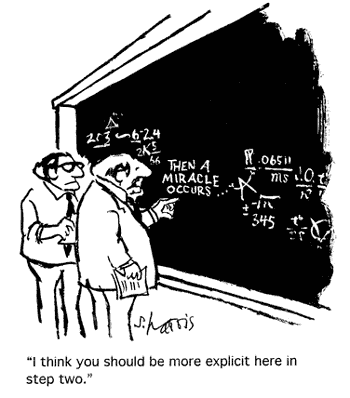It Happens When You Aren’t Looking
![]() [Location: auxiliary writing cave, interior. Kent and Jen enter with hot beverages, colorful paper squares, and steno pads. While Kent relearns (again) how to sit on a couch, Jen starts filling a steno page.]
[Location: auxiliary writing cave, interior. Kent and Jen enter with hot beverages, colorful paper squares, and steno pads. While Kent relearns (again) how to sit on a couch, Jen starts filling a steno page.]
Kent: What are you —
[Jen holds up exactly one finger for exactly one second, then resumes her mad scrivening.]
Kent: Should we start marking things on the cards?
Jen: Shhh.
[Five minutes pass, then Jen presents the still-glowing steno pad for inspection. Kent is moved almost to tears by the majesty he beholds there. On a single page, Jen has captured the essential form of Grandson of Science Novel, that which has resisted them for weeks. It’s like the surgeon’s photo, mysterious and evocative and somehow all the more true by dint of its artifice.]
Kent: What’s with the three lines that have stars?
Jen: Those are the places that aren’t really there. Deep, huh?
[Hold for applause.]
Ever since we decided that it made sense to do the outlining now for both sequels to the Science Novel, we’ve been hammering away at the third tale in the set. We confirmed that there would be plenty of story left to tell after the middle volume, but it was just sort of all in a pile. And we knew stuff was missing from the pile, but we couldn’t tell how much; how big were the gaps, and where were they?
The other night, some kind of threshold was reached in Jen’s creative faculties. As we’ve described previously, after you tell yourself things enough times they feel true, and when they feel true they become sturdy enough to lash together into a coherent structure. (Or, maybe the pieces are fastened by means of a goose wrench.) In this case, it was a structure that had three “and then a miracle occurs” linkages. However, that very night we filled in two of those gaps. The third one remains, but discussions about how to fill it have been fertile and are revealing new levels we can explore over the course of the book as a whole.
Having a variety of ways to look at your ideas is important to help you get unstuck. Having a partner doubles (at least) your chances of someone being lit from within by the creative spark you need to get past a particular obstacle.

